
Content marketing has quickly become one of the biggest talking points among marketing conversations - and for good reason, too.
According to a joint study conducted by Oracle and Kapost, those who implement content marketing into their marketing mix see an 80% drop in cost per lead in as little as 5 months.
At 24 months, the study found that content marketing to costs 31% less than paid search.
In other words, you could be generating nearly 3x as many leads with the same marketing budget you’re already working with.
With results like this, it’s no wonder 93% of marketers are now using content marketing to grow their businesses.
The problem is, while everyone’s familiar and excited with the concept, few truly understand how it plays a role in driving real business objectives like revenue (and not vague, meaningless vanity metrics like ‘engagement’).
What’s worse, establishing and implementing a strategy that will leverage content marketing to reach those business objectives can be an even bigger challenge.
Here, we’ll break down this abstract concept to fully explain how multifamily properties can use it to drive more leases.
Let’s get started.
Content-driven marketing is anything but new.
Some of the most successful brands like Coca Cola, Red Bull, GoPro, Whole Foods, even Marriott have all been using it for years, some of them decades, across all types of audiences, products, and industries.
The difference is that today, all brands are publishers - with access to channels that can provide the same reach and influence for pennies on the dollar.
All digital marketing practices, whether it’s advertisements, social updates, email newsletters, or even the copy on your website, all comes back to content.
That means results will suffer without the ability to consistently execute on high quality content.
But on the other hand, it provides a tremendous opportunity.
That tight ‘integration’ between all digital marketing channels means that they can scale together, where one channel benefits from and contributes to the results in other channels as well.
Blog posts provide fodder for social updates and email newsletters.
Those social and email messages help expanding awareness and PR. Increased reach helps drive SEO, which in turn brings more people back to the original blog posts an ongoing basis.
Compare that to say, traditional outbound marketing channels.
Radio, print, television, and other offline methods are segmented, leading to disconnection (and often, wasted budgets).
So what does that all mean? Why does it matter how these two worlds work?
It's because content-driven methods, which power ‘inbound marketing’, deliver much stronger ROI's. Consistently.
For years inbound marketing has produced a massive cost savings, with ‘inbound’ leads costing 63% less.
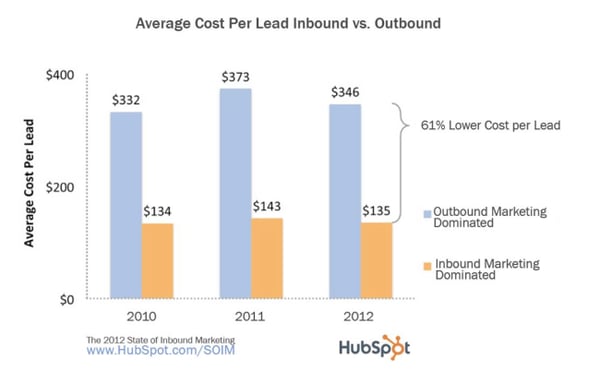
And the latest State of Inbound Marketing report goes further, highlighting the how that efficiency has grown since:

But how, specifically, does content help drive more revenue (while also saving a few bucks at the same time)?
Let’s take a look.
Most savvy executives know that ~70% of the ‘renters journey’ is over before a renter talks to your salesperson.
That’s significant though, because today this 70% is all happening online as renters are educating themselves by Googling, reading reviews, getting recommendations from friends, and other activities all summarized as the ‘Zero Moment of Truth’.
Here’s how the ‘renters journey’ routinely looks online:
The key throughout this process is to continue engaging to build trust so that people won’t hesitate to take action when the timing’s right.

Let’s take a look at how content powers each of the stages along the ‘renters journey’ to see how content impacts each.
We know that those who are going to Google are very goal oriented. In other words, they are intentionally searching for something specific and are focused on satisfying a specific goal.
89% of consumers start their renter journey with their favorite Search Engine.
In the ‘Awareness’ stage, people are looking for general topics of interest, information, or some basic education making their activity very goal oriented.
In other words, they are intentionally searching for something specific and are focused on satisfying a specific goal.
At this stage, renters don’t necessarily know you exist yet, and they’re not even sure they need what you have to offer.
Instead, they have some question or vague interest - like say, apartment furniture.
What better way to capture this person’s attention than a helpful, relevant, high quality resource offering information on exactly that.
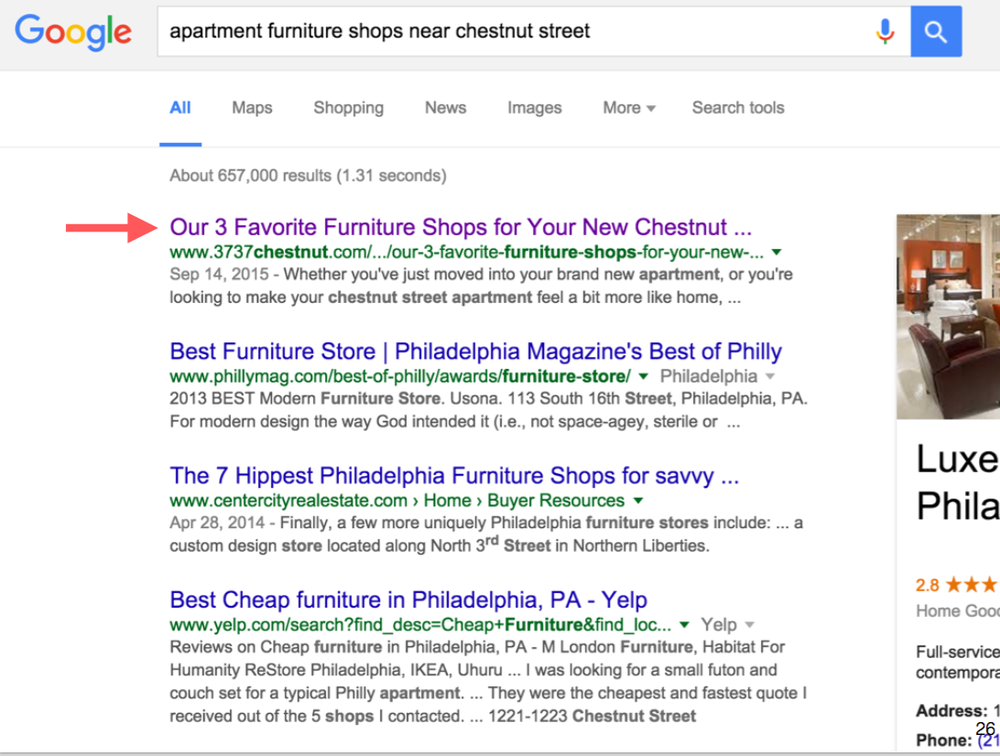
Especially for newly constructed apartment buildings in their lease-up phases, using blog content to target these types of ‘long tail keywords’ (essentially the less popular, but still influential) and phrases is one of the easiest ways to capture attention, rank higher in search, and give yourself the opportunity to increase brand awareness with your target demographic.
Social media is equally as influential in the ‘Awareness’ stage, yet there’s an important difference.
While people going to Google are searching for something specific (with intent), social media is a place to uncover news and information among those that they trust such as their friends, family, favorite brands and other ‘trusted publishers’.
Today, rather than going to a specific website, 88% of millennials rush to Facebook for their daily dose of news and interesting stories.
The type of news and information users are absorbing most on social media is not information that they are actively searching for, but still very relevant because of who’s providing that information; friends, family, brands, companies, and others that they have chosen to trust and follow.
As a result, your social media efforts need to focus on publishing content that is relevant, interesting, and provides value for your targeted audience’s and future renters that will enhance their experience and build trust in your brand over time.
By doing this, you’re able to leverage that trust and influence them during their renter journey.
Knowing this, the way you use content to capture their attention and build trust should adjust accordingly.
For example, beautiful photography and other high quality visuals can (a) capture someone’s eye and (b) communicate a lot, quickly, to people who’re on the move and multitasking.
.png?width=1000&name=5+Untitled+(1).png)
Similarly, by curating relevant content from recognizable influencers on social media gives you a chance to generate awareness among their audience and continue to build trust among your existing followers.
Once again, content is giving you the opportunity to ‘get your foot in the door’ with specific types of potential renters in an organic, authentic way that can’t be matched by other traditional methods.
When there’s an event in someone’s life that causes them to become aware of a need, they enter into the ‘Consideration’ stage.
Here that commonly means a new job, need for relocation, getting married, having kids, lease expiring, lay offs, and many other possibilities that all lead to one conclusion: a new place to live.
They begin looking, generally at first, at all potential options - casting a wide net. They’re not exactly sure what amenity mix they desire just yet, or which specific location, but they’re getting a ‘lay of the land’ through a blend of Googling, recommendations, and other online review sites.
When potential properties do pop up, they’ll start with ‘branded searches’ to get a better idea of what this place is, and see if it matches what they’re potentially looking for.

Influential review sites like Yelp, and other aggregators will commonly pop-up among the top. But you can also control the conversation by utilizing other social tools like Facebook to raise your profile and help you put your best foot forward.
Once on a Facebook page, your content updates drive (or don’t drive) engagement and interaction that provides credibility to interested prospects who’re casually browsing. This point is critical at such an early stage, because people are looking for any quick sign of something that interests them, or turns them off, commonly judging in a matter of seconds.
Engaging content, which again fulfills some need by providing interesting information, or simply just providing a few minutes of entertainment and distraction, can go a long way into shaping this conversation you’re metaphorically having with each browsing prospect.
Only after becoming aware of a need, and evaluating their options, are prospective renters ready to sit down and compare specs.
Now they a good idea of the prime location they’re interested in. They more or less know their budget. And they know which amenities they’re willing to pay for (and which they’re not).
Your job here is to continue capturing attention and capitalizing on this timing with targeted, appealing offers to get that property appointment scheduled. In other words, capitalize (in a good way) on the trust you’ve built so far and use it to influence the prospect to take action.
Highlighting unique or differentiated property features through social content is one of the most effective ways to do just that, while also showing (not telling) prospective renters exactly why your property deserves a visit.
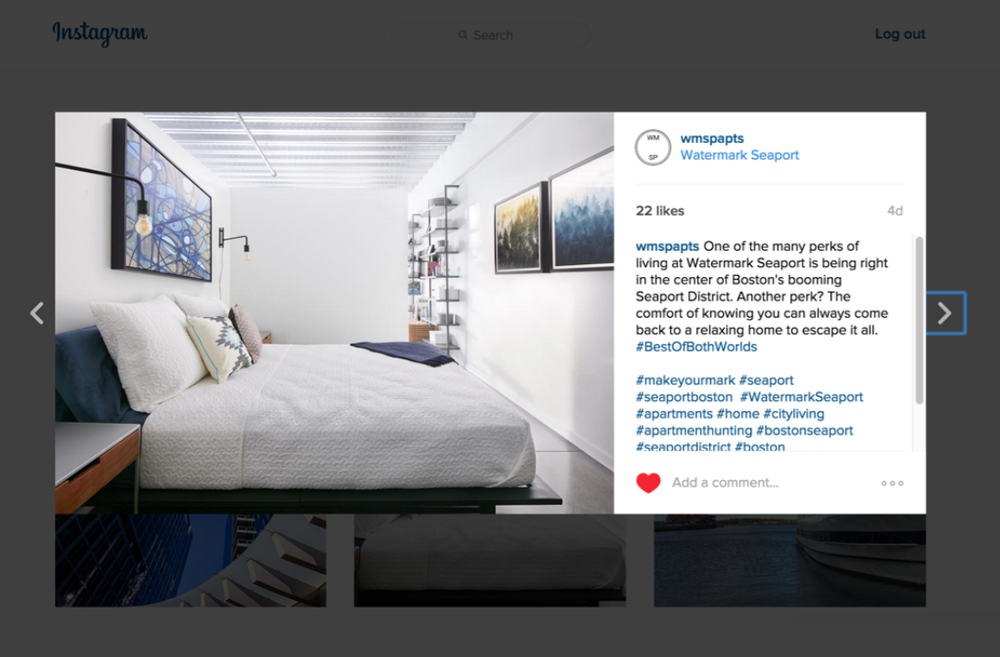
If you’ve done your job properly up to this point, the rest should be easy. The prospect has been given an opportunity, through their journey and your content, to familiarize themselves with most of what you have to offer. All that’s left is closing the deal.
Once you’ve already built the foundation of trust, this part is easy. You just need to be there when they want, where they want, and with what they want.
For example, a social media page that’s optimized to convert would include a timely social update with a clear call to action and phone number.
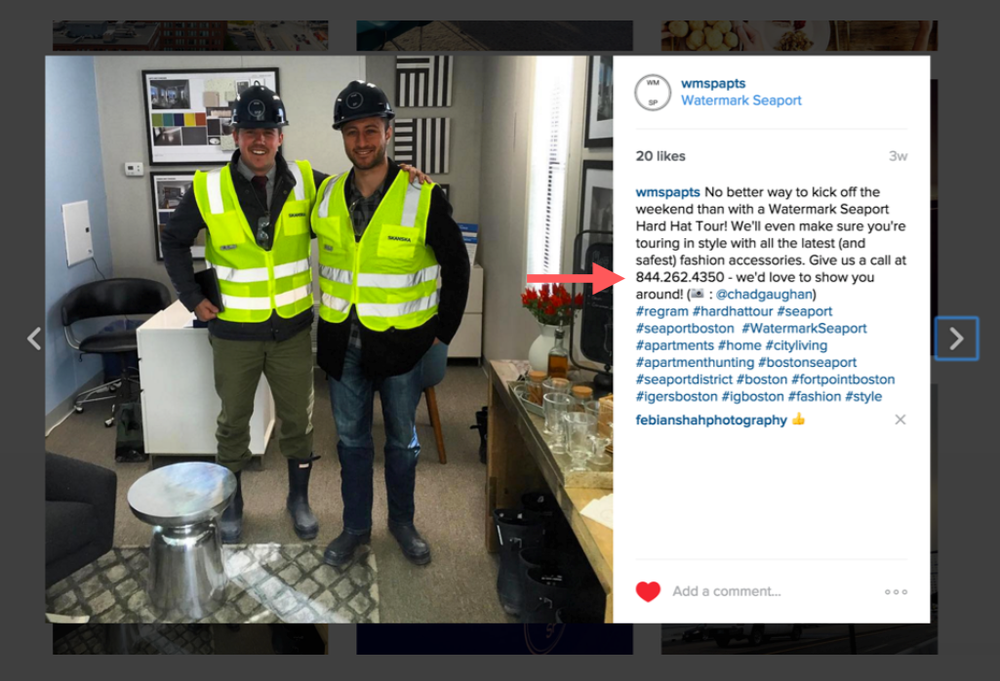
Another example includes making sure your site is properly set-up to capture ‘action’-related searches, and easy to navigate. While the messaging is important, but the timeliness and effort invested up until this point is even more so.
That means even something as simple as a simple CTA at the bottom of a blog post or piece of content on your site would work.

When content is used to help ‘grease the wheels’ like this from stage to stage, fast revenue improvements aren’t out of the question.
For example, we helped one apartment community generate $306,000 in revenue in only 45 days (which broke down into a 154% ROI on 70% more leads), all by implementing the exact content tactics and methods outlined here.
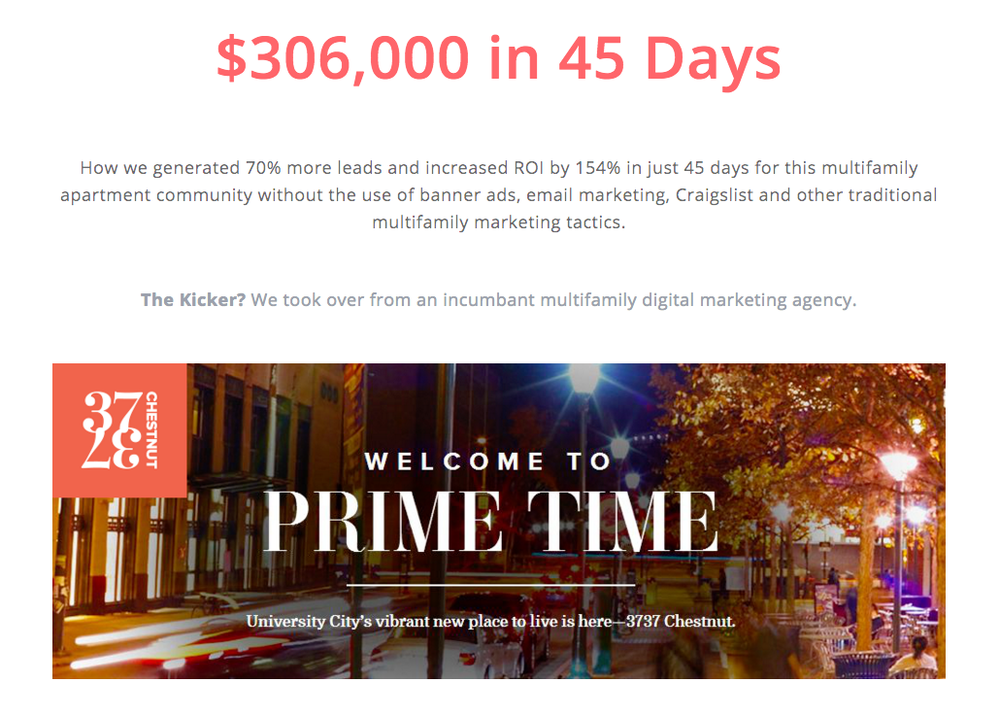
What’s even more impressive, is that we accomplished this huge growth without using common multifamily mainstays like spamming Craigslist or ineffective banner ads.
Instead, we got specific on providing the right message to the right person at the right time - all through content, and decreasing marketing costs 47% in the process.
‘Content marketing’ isn’t a new trend, unproven and unvetted.
It’s been around for decades, delivering real ROI through helping turn strangers into customers.
Content also provides one of the best ways to differentiate your brand from competitors without resorting to discounting and other price war tactics.
Today, content provides an even more incredible opportunity to turn website traffic into leads and lease by providing helpful blog posts targeting influential topics, using your social presence to assure and attract interested prospects, and targeted ads with a compelling offer that renters can’t refuse.
Once you’ve built up enough trust, then a simple call-to-action on your website and social networks will take advantage of the key timing component.
At every step of the ‘renters journey’, content helps attract, convince and motivate people through the critical proactive research that now happens entirely online.
If you implement content effectively at each stage of the journey, it will only be a matter of time before property visits increase significantly.
And if that’s happening on a consistent basis, dramatic increases in revenue aren’t far behind.
Contact us now if you’re interested in learning more about how content can provide similar results for your property. (see what we did there?)
These Stories on Content Marketing

San Diego, CA
600 B St.
San Diego, CA 92101

Austin, TX
600 Congress Ave.
Austin TX 78701

Washington, DC
1875 Connecticut Ave NW
Washington, DC 20009
Copyright © 2024 AM Digital, LLC Terms of Service Privacy Policy
Street Address
City, ST 00000
Call us: 1-800-COMPANY
(800-000-0000)